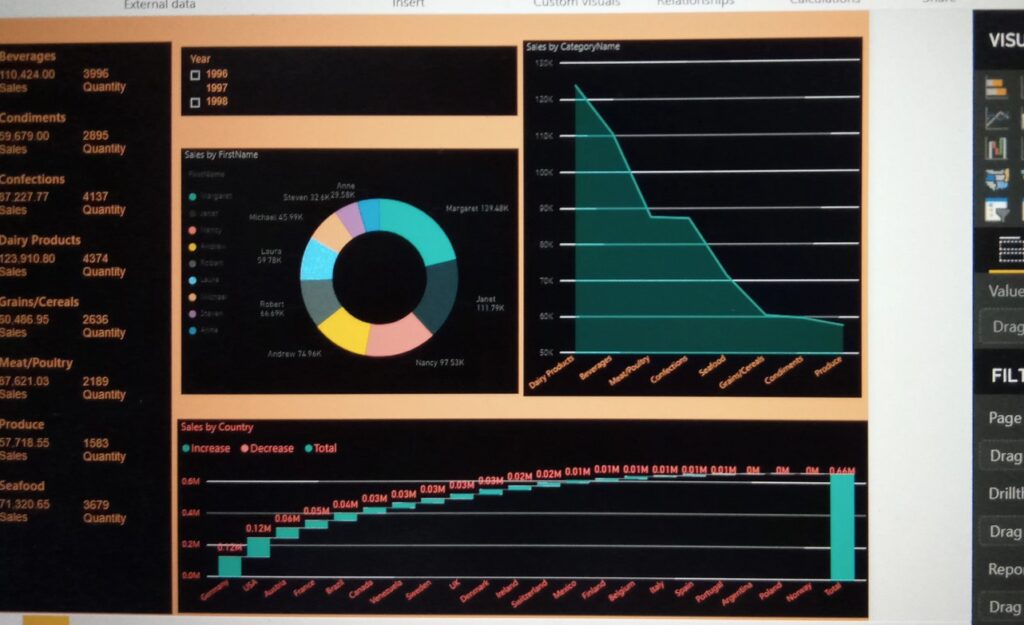
How to Use Raw Data to Improve Investment Intelligence?
Important decisions in many areas were once made based on opinion, hunch, and personal experience. Now more and more of those decisions are being based on data and scientific analysis. This shift is felt in the field of investment as strongly as in any other. Instead of isolated opinions and tips, today investors want raw data and its skillful processing. We have reached the point where raw data is becoming a necessary part of high-quality investment intelligence; therefore it is a critical time to look into what raw data brings to the table. Read more about it here.

The growing importance of data in investing
Big data has been a driving force behind gradual and sometimes even revolutionary change in many industries and fields of business. In finance and investment, its role is already huge, but at the same time still growing.
More and more investment analysts are turning to data science and alternative data sources to complement the traditional ways of investment analysis and improve the results. This is because traditional fundamental analysis is no longer enough to stay in the game. To keep competitive and get their shares of returns, investors have to utilize the power of raw data.
That does not mean that traditional information sources and modes of analysis disappear completely from investment intelligence. It means that now there is an additional set of tools and sources that can be added to the toolbox of the investor. And raw data analysis tools are so important that investors could hardly be said to be prepared for modern-day investment challenges without them.
Due to the relatively broad definition of raw data, it can be difficult for investors to decide which raw data sources and types are the most beneficial to their business objectives. Some of the more common raw data types include:
- Financial data – data surrounding the financial standing and operations of a company
- Product and service reviews – information that reveals market insights based on public product and service review.
- Firmographics – business demographics data, including company size, location, etc.
- Social media data – data from social media networks that display how users interact with online content and display social sentiment.
- Technographic data – is data that is used to describe a company’s technology stack.
Therefore, the growing popularity of raw data and alternative data sources in investment is not just a fad that is going to pass. It is here to stay, which means any investors who are also here to stay should look into what it brings to the table.

The advantages of using raw data
As the world we live in is shaped by huge amounts and the speed of information, there is no wonder that raw data is becoming more and more important in investment. But the growth of its use is fueled not only by the general rise of data analytics in business but also by the many benefits it brings to investment intelligence.
To illustrate this point, here are just a few of the most important advantages of utilizing raw data to improve investment analysis.
-
Fresh insights
Utilizing raw data means going outside of the box and looking to new ways to extract insights that are new and revealing for investment decisions. And as often is the case with innovation, it pays off greatly when done with determination. Analysis of the various types of raw data allows us to look at investment in new ways and get fresh insights into how things could be done to maximize utility. With many types and sources of data, there are many angles to look from at the businesses and industries. And the more angles we try, the more chance there is to find just the right one for the next big investment.
-
Seeing what others have not seen
One of the things that led to the initial impulse to look for alternative data sources for investment is the risk of crashing into the same trade deals when using only traditional investment intelligence. When everyone is using the same computer modeling for investment decisions and looking at the same data, they will most likely see the same opportunities. But a good opportunity is no longer good if everyone sees it at the same time. Clashing with other investors on the same deals will drive the value of investment down. Utilizing raw data of different sorts allows us to see what others will not see. As there are many types of data, hiding many different opportunities, unique profitable investment decisions can be reached by analyzing it.
-
More value in less time
Normally, the more we have, the more time it would take to extract value from it. However, with contemporary data analysis tools, raw data can be processed relatively quickly. As large amounts of data can be acquired on-demand, it gives an advantage over waiting for financial reports or other processed data from traditional sources. This means that time can be saved instead of lost by extracting many valuable insights from various types of raw data. Likewise, due to recent technological advancements surrounding web scraping and data extraction, data providers are also able to provide businesses with historical data. Historical data is useful in that it can help establish baseline sales goals, provide investors with a bigger company picture, and can help improve efficiency in daily business processes.

Every insight is in raw data
Data is said to be raw when it has not been processed in any way. Only after the data has been processed it becomes truly informative for the investor to make decisions.
But there is a good reason to get your data raw. When you get the information that has already been processed, something is already missing from the original data that you cannot get to. Raw data at your disposal can be processed and analyzed in different ways. Everything of value is still in there so there is still a chance to get the best insights without any loss of information.
That is why investors keep turning to raw data to supplement their investment intelligence and find all the value in there.